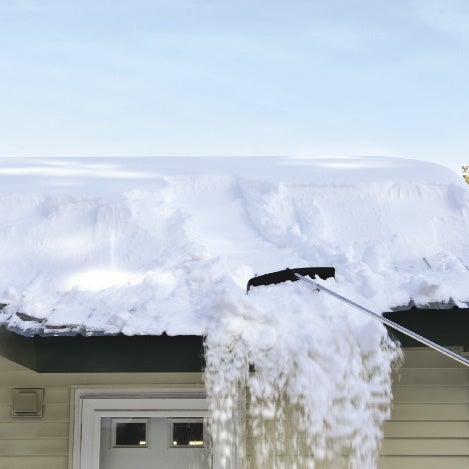After a relatively mild start to the winter, Central Massachusetts has been hit by significant winter storms since early February. After clearing snow from walkways, parking lots and driveways for safety reasons, businesses need to be concerned about the buildup of snow on their rooftops, where enough pressure can lead to damage or – in rare instances – a collapse with disastrous results. With some proactive removal, companies can avoid this fate.
Here are 10 steps to follow:
10. Make an initial assessment
Identify the primary structural elements on the roof, then remove snow in that area to prevent unbalanced snow loading.
9. Target an area
Start off smartly by designating a few areas on the ground where you plan to dump the snow.
8. What FEMA says
The Federal Emergency Management Agency says that at least two inches of snow should be left on the roof to avoid causing potential damage to roofing materials and structure.
7. A roof is no place for equipment
It’s a bad idea to use gas or electric powered snow-removal equipment. Damaging the roof membrane is worse than a speedy job, not to mention safety issues.
6. Ice breakers and ice picks
Avoid using any ice breakers, picks or other sharp tools. Always use non-metallic or plastic shovels. Roof shingles are especially delicate in freezing temps.
5. Get the drift
If possible, shovel off drifted snow accumulated around windows, building slopes, parapets and around equipment. Remember, the colder it is, the lighter the snow will be to lift.
4. Avoid a lawsuit
For commercial or tenant claims and especially relating to the clearing of walkways, poor snow removal can be worse than letting it be. A court ruled that liability can arise from “negligent performance of a voluntary undertaking.”
3. Buildings have lungs, too
Clear snow away from all vents, exhaust pipes, building exits, fire escapes, drain downspouts, gutters, service ladders and HVAC equipment.
2. Tell someone your plan
If you cannot recruit a helper to join you, alert people of your task in case of an emergency.
1. To shovel or not
Snow can develop into a thick ice crust too hard to shovel and not worth risking personal injury. Because roofs are designed to handle distributed weight loads, roof collapses are rare.n
Scott Lacourse is a director at Needham-based Enservio, a provider of contents claim software, payments solutions, inventory and valuation services for property insurers.

